Angus Wilson, a Scottish-born artist, has a bold and powerful style akin to that of the great Post-Impressionists Matisse and Cezanne, however, an “Angus” is known for his contemporary twist, a style adorned by his loyal following. His detailed planning process is an ode to his work as a former director, producer, editor, and animator, and ultimately allows the artist to focus on the details of his brushwork and color mixing. Take a walk-through Angus’ studio in San Francisco, and read about his process. (Be sure to envision his wonderful Scottish accent).
I am a still life painter, and I believe passionately in still life painting. The drive is about the color and the form, of making a compelling painting. The idea of being unique, of having a strong vision in my work, and creating work that doesn’t look like anything else–It’s what I’m struggling for.
It’s rare to have that epiphany about a series of lemons, or flowers in the vase. For me there’s a greater vision about what’s important in still life painting, how I am adapting the subject and growing it as a painter. It’s a journey into the process.
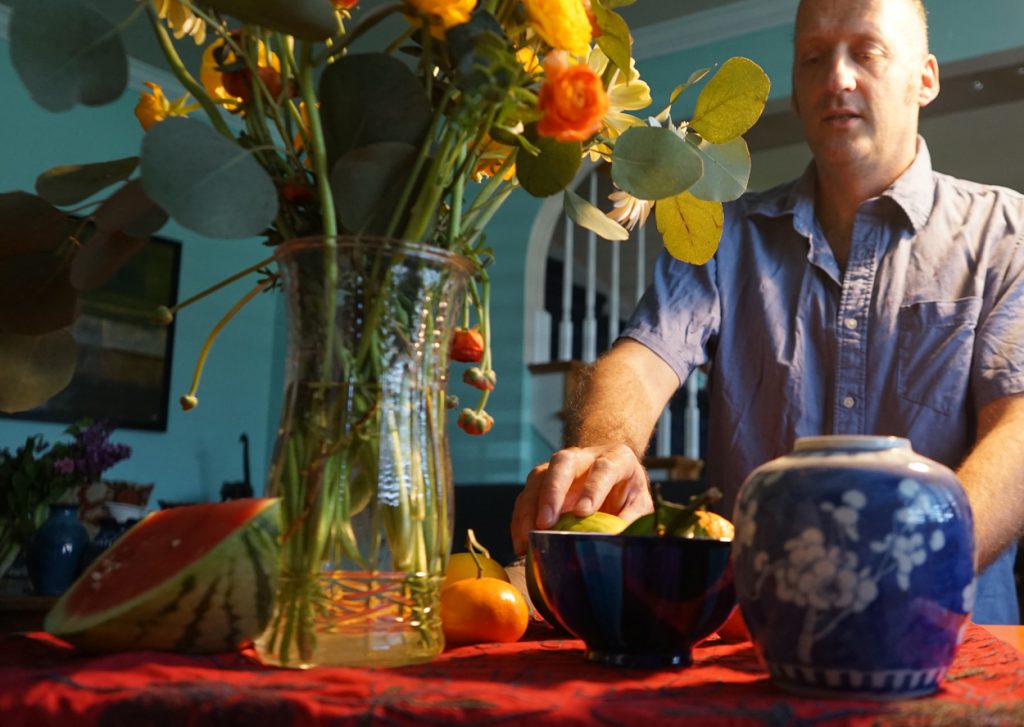
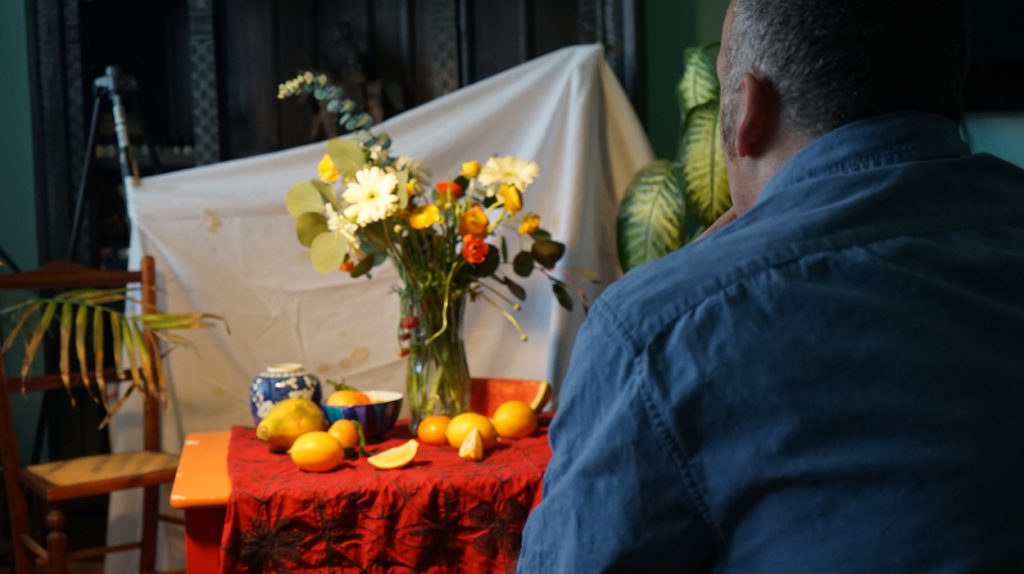
I’ve arranged that still life painting, and I work from photographs, but the original placement is fairly careful to place the right elements that are sympathetic to each other. You want a nice flow of shapes—some big sized items, medium sized item, small items–in a pleasing way.
Very early on in this still life journey I used to paint a blue lemon, if it felt right. I’m quite happy for someone to misidentify a piece of fruit, but I do care if it doesn’t seem like an appealing element to them. We know what a color should be. A pomegranate may be depicted in a lighter pink, but it still feels like a comfortable color for a pomegranate to be. They [the fruit] are your pillars of color. This is the start of the color palette coming together.
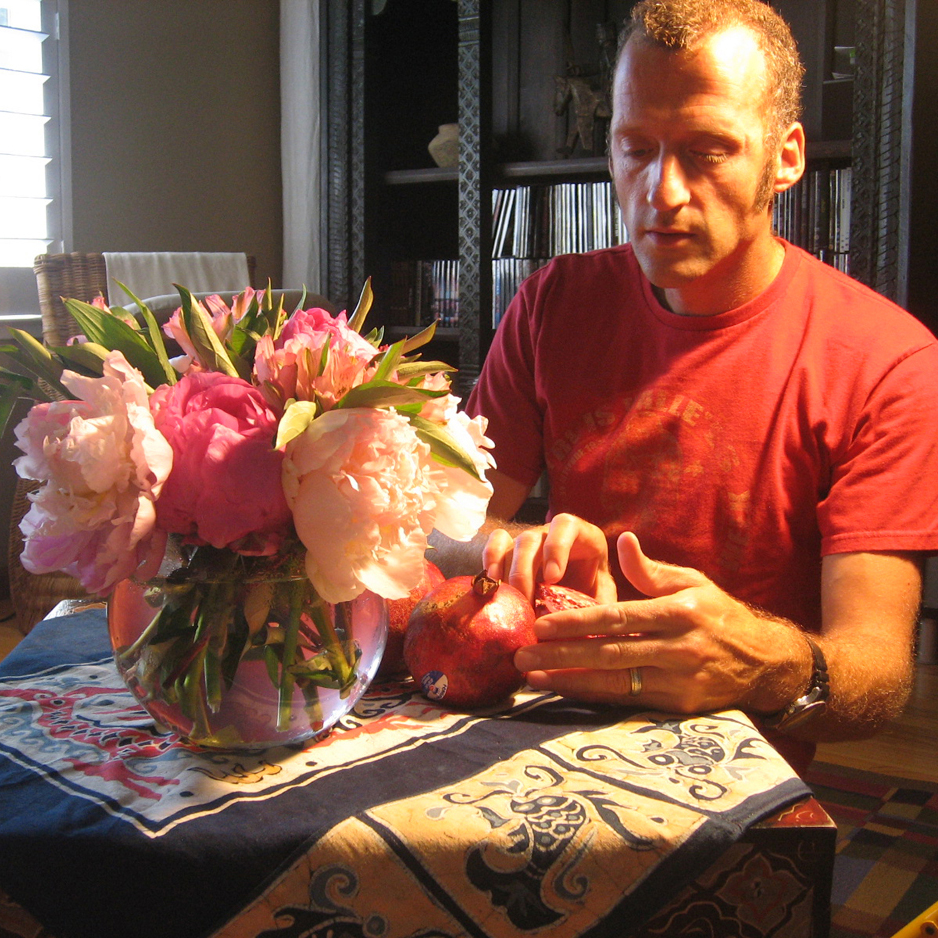
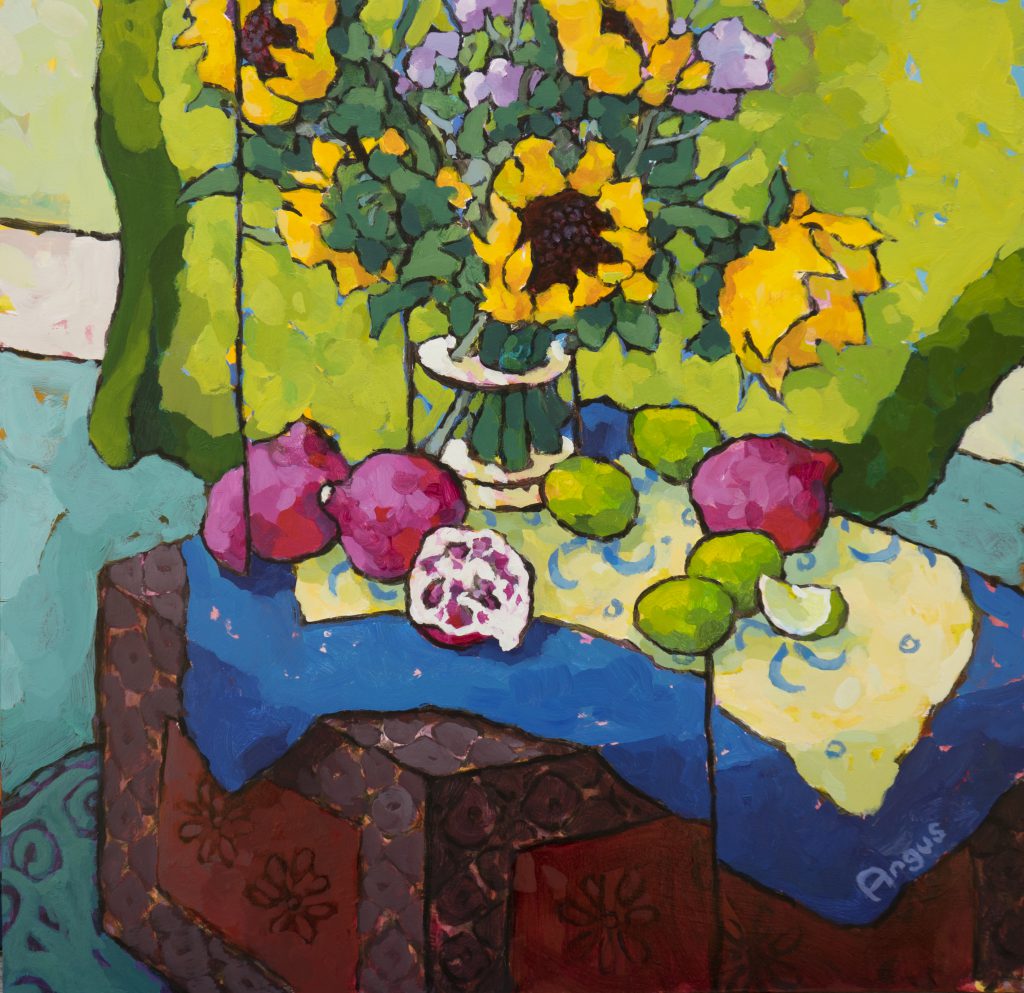
In a traditional painting, the area of more tonal contrast help you hide what you want and find what you want. There’s a focal point and an area of a painting that’s less defined, softer, darker, and your eye rests in those areas. I paint lines, these heavy outlines. Because of that, the ‘lost and found’ concept doesn’t work because I’ve outlined everything. So, for that painting to succeed it needs really good color choices, and composition. If they don’t work, the painting fails.
I do those outlines first—that’s careful work. Then I’ll step away and do the color plan. I am looking to see, first of all, commonalities in colors, or colors that are going to play well together. I’m using my original source material. Maybe I have done some sketches, but I’m looking at that color plan in front of that original photograph. I am looking for items that are authentic, but the floor color, chair, might sympathize or react with the color in the paintings.
It’s all about creativity, for us, where we are all following our personal journeys as artists, and are doing it in the way we gradually learned to do. I have friends who have a wonderful creative time— start with a scribble and don’t know what it’ll look like, then they do more, and more, and then they know more and more— intuitively. We are growing and changing, but we are also locked in our channels. I am locked in mine, where I use methods I continuously use and don’t change.
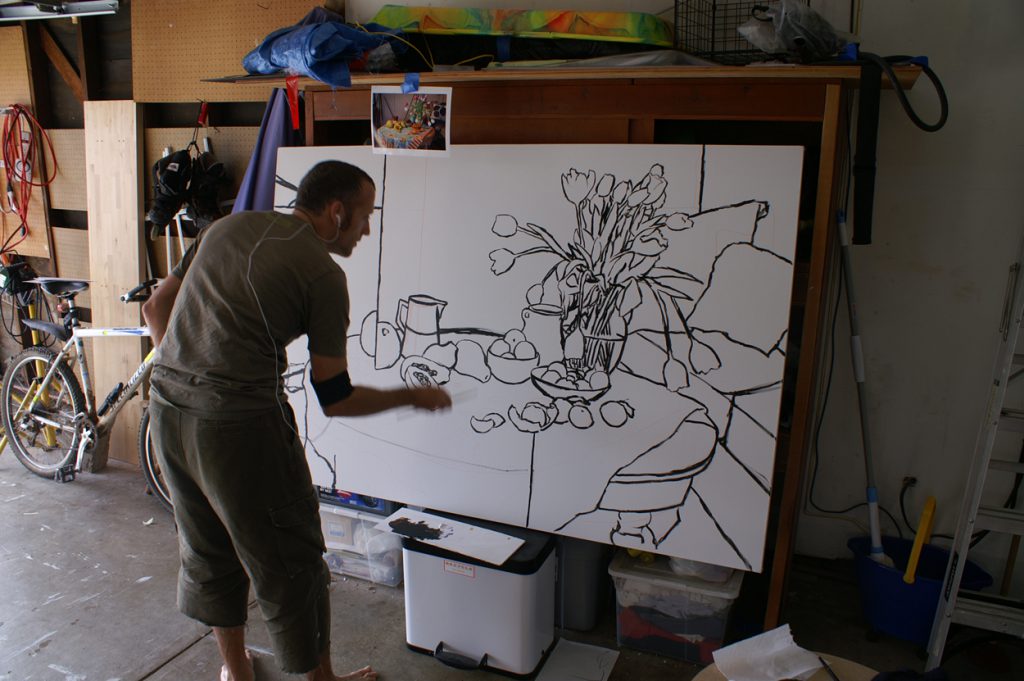

I used to do pastel or thumbnail sketches. Make color notes. I would do a few, and choose my favorite. A while ago I started using Adobe Photoshop to play with color. I separate elements of the painting on different [digital] layers, so I can play around with colors. Hours have gone into designing an important or tricky painting just in that stage. I am a traditional artist using digital methods in a wacky way. That’s definitely born out of the history of TV and computer games, so I’m comfortable with that tech to use in the creative process.
Now, I’ve got a color plan and, basically, a black and white canvas. I look at the colors I’m going to paint my final painting, and choose colors in little groupings of dots. The underpainting in my work—it’s like lazy pointillism. When you step back, you see a more vibrant green because there’s a little red in there, or vice versa. [Each painting] is a kaleidoscope of colors, really, and a lot have been left to show.

For example, in “Grouping of Lemons and Pears on Blue,” there are pinks and yellows in the under-painting of the backdrop. I don’t plan the under colors. The whole thing about process is it’s all about choices. Those accents of color create mirroring: the hot pinks and reds are in the table cloth, but also in the background up high, unified in the color tone in the background and on the table cloth.
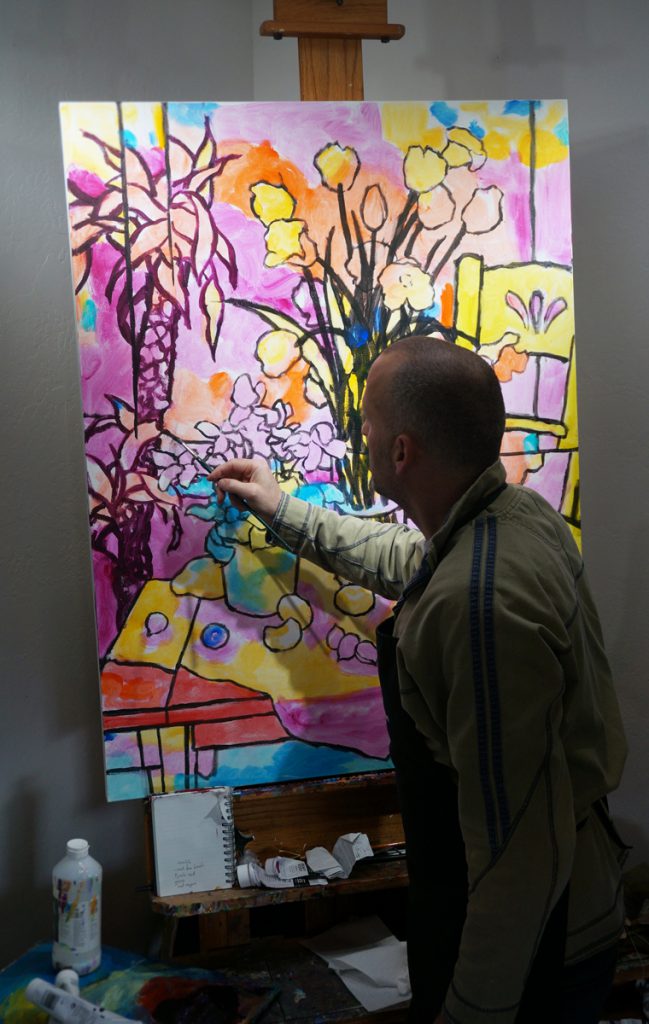
I’ve worked hard to get to the goal of creative still lifes that look different than anyone else’s. I feel happy with my work if I feel I have achieved those goals, because I don’t want to be derivative at the end of the day, in all sense of that word. Personally, I have a “what’s the point mentality.” I want people to know “oh hey, that’s an Angus painting” without having to read the signature. It’s a British thing—I want to tear down the walls but only so slightly and ever so politely.
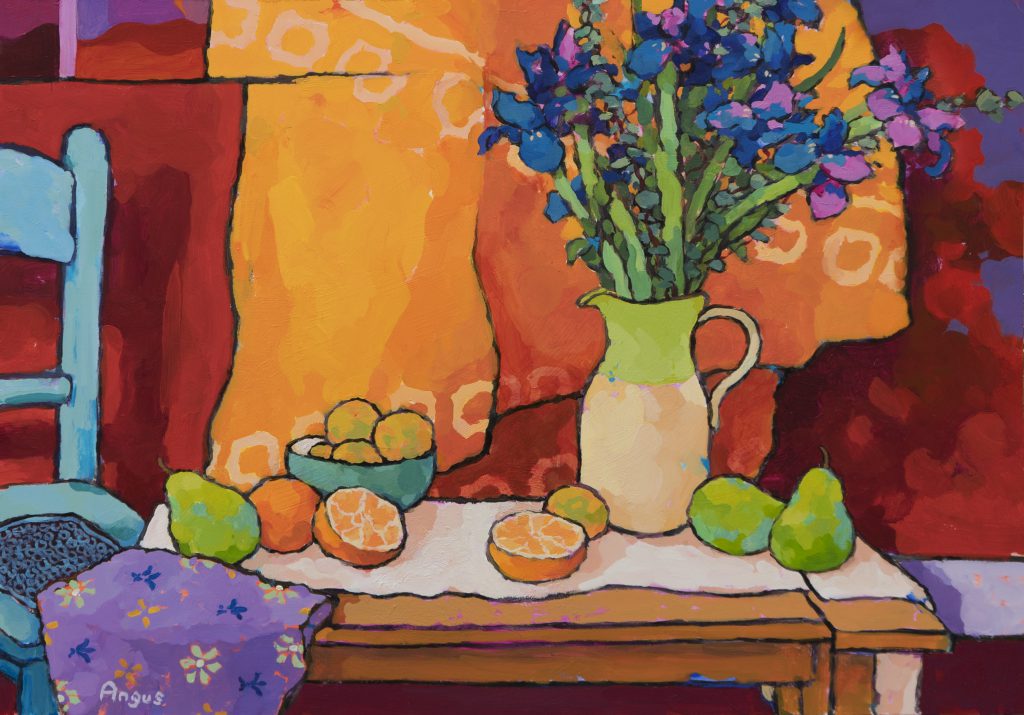
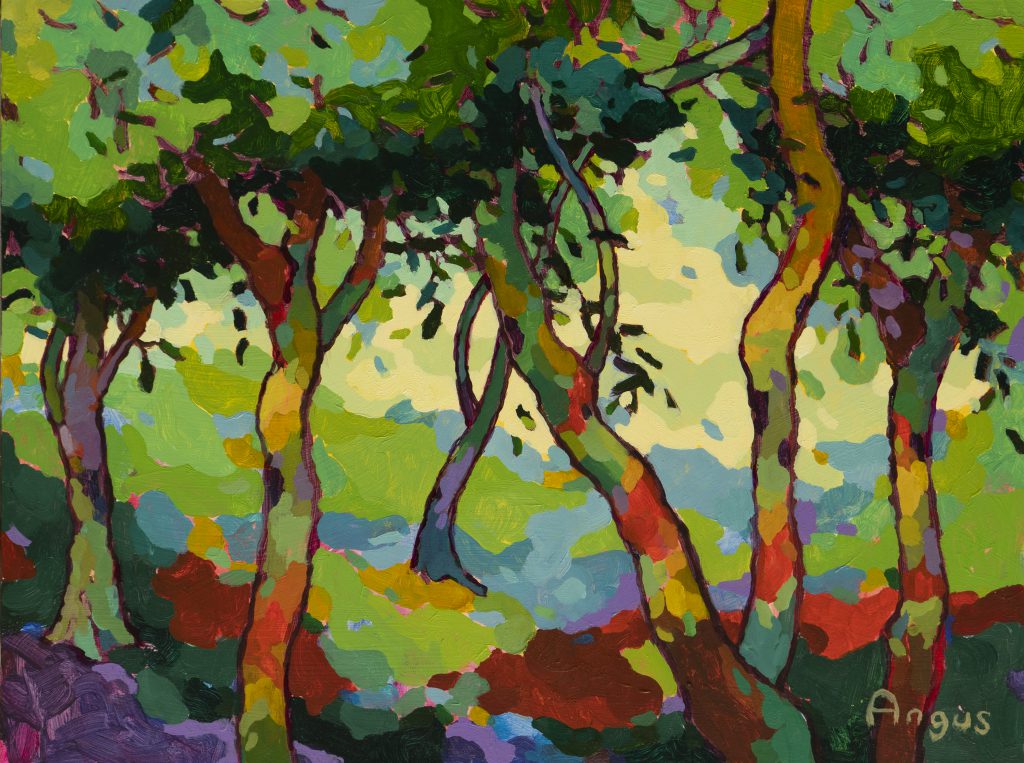
To see more works by Angus Wilson, visit Ann Korologos Gallery in Basalt at 211 Midland Avenue, browse his artist page, or give us a call at 970-927-9668.